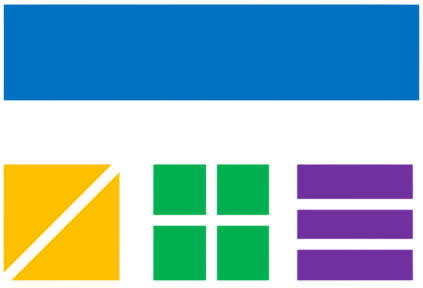Interest Calculator Information
What is Interest?
Interest Calculator helps you calculate interest earned or paid on loans and savings. Whether you\'re saving money, taking out a loan, or investing, understanding interest is crucial for making informed financial decisions.
Interest is the cost of borrowing money or the return earned on savings and investments. It\'s typically expressed as a percentage of the principal amount.
Types of Interest
- Simple Interest: Interest calculated only on the original principal amount.
- Compound Interest: Interest calculated on both the principal and accumulated interest.
- Annual Percentage Rate (APR): The annual rate charged for borrowing or earned through investment.
- Annual Percentage Yield (APY): The effective annual rate of return, accounting for compound interest.
Simple Interest Formula
Simple interest is calculated using the basic formula:
- I = Interest earned or paid
- P = Principal amount (initial investment or loan)
- r = Annual interest rate (as a decimal)
- t = Time period in years
- A = Total amount (principal + interest)
- P = Principal amount
- I = Interest earned
Example: $1,000 investment, 5% simple interest, 3 years
You earn $150 in interest, total amount is $1,150
Compound Interest Formula
Compound interest is more powerful as it earns interest on interest:
- A = Future value (total amount)
- P = Principal amount
- r = Annual interest rate (as a decimal)
- n = Number of times interest is compounded per year
- t = Time period in years
Example: $1,000 investment, 5% compound interest, monthly compounding, 3 years
You earn $161.60 in interest, total amount is $1,161.60
Compounding Frequencies
Common Compounding Periods
Frequency
- Annually: Once per year (n = 1)
- Semi-annually: Twice per year (n = 2)
- Quarterly: Four times per year (n = 4)
- Monthly: Twelve times per year (n = 12)
- Daily: 365 times per year (n = 365)
- Continuous: Infinite compounding
Impact
- More frequent compounding = higher returns
- Daily compounding vs. annual: ~0.1% difference
- Monthly vs. annual: ~0.2% difference
- Quarterly vs. annual: ~0.1% difference
- Continuous compounding: e^(rt) formula
Interest on Loans vs. Savings
Borrowing vs. Investing
When Borrowing
- Interest is a cost you pay
- Lower rates are better
- Shorter terms reduce total interest
- Early repayment saves money
- APR shows true borrowing cost
When Saving/Investing
- Interest is income you earn
- Higher rates are better
- Longer terms increase total returns
- Compound interest is your friend
- APY shows true earning potential
Factors Affecting Interest Rates
- Federal Reserve Policy: Central bank rates influence all interest rates
- Inflation: Higher inflation typically leads to higher rates
- Credit Risk: Riskier borrowers pay higher rates
- Loan Term: Longer terms often have higher rates
- Market Conditions: Supply and demand for credit
- Economic Growth: Strong economies may have higher rates
- Government Policy: Fiscal and monetary policies
Tips for Maximizing Interest Earnings
- Choose accounts with higher APY rates
- Look for compound interest, not simple interest
- Consider more frequent compounding periods
- Start saving early to benefit from compound growth
- Compare rates across different financial institutions
- Consider CDs for guaranteed higher rates
- Look for promotional rates and bonuses
- Avoid fees that can eat into your interest earnings
Tips for Minimizing Interest Costs
- Shop around for the lowest APR rates
- Improve your credit score to qualify for better rates
- Choose shorter loan terms when possible
- Make extra payments to reduce principal faster
- Consider refinancing if rates drop significantly
- Avoid high-interest credit cards and payday loans
- Pay off high-interest debt first
- Negotiate with lenders for better terms
Frequently Asked Questions (FAQ)
Q: What\'s the difference between APR and APY?
A: APR (Annual Percentage Rate) is the simple interest rate, while APY (Annual Percentage Yield) accounts for compound interest. APY is always higher than APR for the same rate.
Q: How often should interest compound?
A: More frequent compounding is better for savings. Daily or monthly compounding typically provides the best returns, though the difference from annual compounding is usually small.
Q: Why do banks pay different interest rates?
A: Rates vary based on the bank\'s cost of funds, profit margins, competition, and the type of account. Online banks often offer higher rates due to lower overhead costs.
Q: How does compound interest work on loans?
A: On loans, compound interest means you pay interest on unpaid interest. This is why minimum payments on credit cards can lead to growing debt balances.
Q: What is the Rule of 72?
A: The Rule of 72 estimates how long it takes for money to double: 72 ÷ interest rate = years to double. For example, at 6% interest, money doubles in about 12 years.
Important Disclaimers
Disclaimer: This calculator provides estimates for educational purposes only. Actual interest rates, returns, and loan terms may vary significantly based on your credit score, lender requirements, and market conditions.
Interest rates change frequently and may affect your actual payments or returns. This calculator does not account for fees, taxes, or other charges that may apply to your specific situation.
Always consult with a qualified financial advisor or lender for personalized advice about interest rates, loans, and investment opportunities. Past performance does not guarantee future results.
